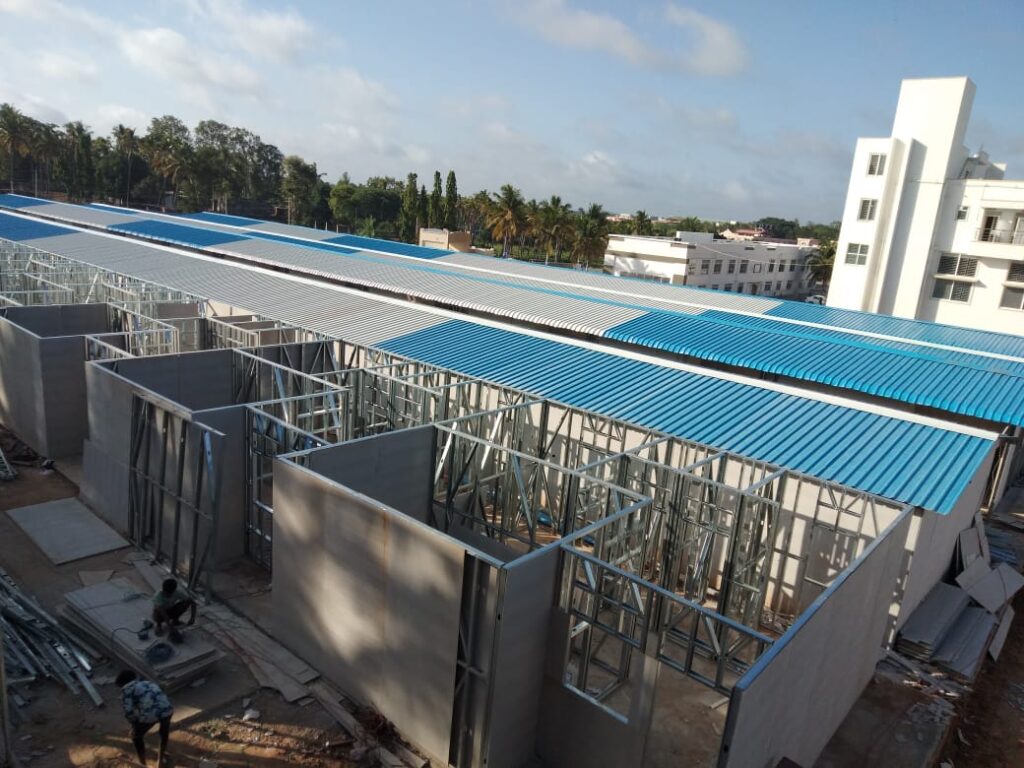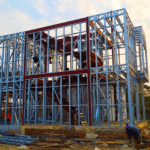Advantages of Prefabricated Building Structures Construction
Introduction: Prefabricated structures or Prefabricated building structures, also known as modular construction, have gained significant traction in the construction industry due to their efficiency, sustainability, and versatility. In this blog post, we’ll explore the numerous advantages that prefabricated building structures offer, & how Prefabricated Structure are revolutionizing the way we build everything from homes to commercial complexes and beyond.

- Speed of Construction:
- Rapid assembly: Prefabricated components are manufactured off-site concurrently with site preparation, reducing overall construction time.
- Streamlined scheduling: Weather delays and on-site disruptions are minimized, allowing for predictable timelines and faster project delivery.
- Ideal for urgent needs: Prefabricated structures are particularly suited for emergency housing, disaster relief, and temporary facilities due to their quick deployment.
- Cost Efficiency:
- Reduced labor costs: Off-site fabrication requires fewer on-site workers and less labor time, leading to significant savings.
- Material optimization: Precise manufacturing processes minimize waste and ensure efficient use of resources, lowering material costs.
- Financial predictability: With fewer variables impacting construction timelines, budget overruns are less likely, providing greater financial stability for projects.
- Quality Control:
- Factory-controlled environment: Prefabricated components are manufactured in controlled factory conditions, ensuring consistent quality and precision.
- Stringent standards: Built to meet or exceed industry regulations and standards, prefabricated structures undergo rigorous quality assurance protocols, resulting in durable and reliable buildings.
- Reduced risk of errors: Assembly line manufacturing minimizes human error, leading to higher-quality construction compared to traditional on-site methods.
- Sustainability:
- Reduced environmental footprint: Prefabricated construction produces less waste, utilizes sustainable materials, and minimizes site disturbance, resulting in a smaller ecological impact.
- Energy efficiency: Modular designs can incorporate advanced insulation, energy-efficient systems, and renewable energy sources to enhance sustainability and reduce operating costs.
- Adaptive reuse: Prefabricated components are designed for disassembly and reassembly, facilitating future modifications, expansions, or relocation with minimal waste.
- Design Flexibility:
- Customization options: Prefabricated building systems offer a wide range of design possibilities, from standard modules to bespoke configurations tailored to specific project requirements.
- Architectural innovation: Advanced manufacturing techniques enable complex designs and architectural features that may be challenging or costly to achieve with traditional construction methods.
- Scalability: Modular construction can accommodate projects of various scales, from small housing units to large-scale developments, offering scalability and adaptability to diverse needs.
- Safety and Health:
- Enhanced safety protocols: Factory-controlled environments minimize on-site hazards such as falls, accidents, and exposure to adverse weather conditions, prioritizing worker safety.
- Health considerations: Off-site construction reduces exposure to pollutants, allergens, and other on-site health risks, promoting safer working conditions for construction personnel.
Conclusion: Prefabricated building structures represent a paradigm shift in the construction industry, offering numerous advantages over traditional building methods. From accelerated construction timelines and cost efficiencies to superior quality control and sustainability benefits, modular construction is poised to shape the future of architecture and construction, driving innovation and meeting the evolving needs of the built environment.
Read what is prefabricated building structure https://jadrosteel.com/what-is-prefab-building/






















